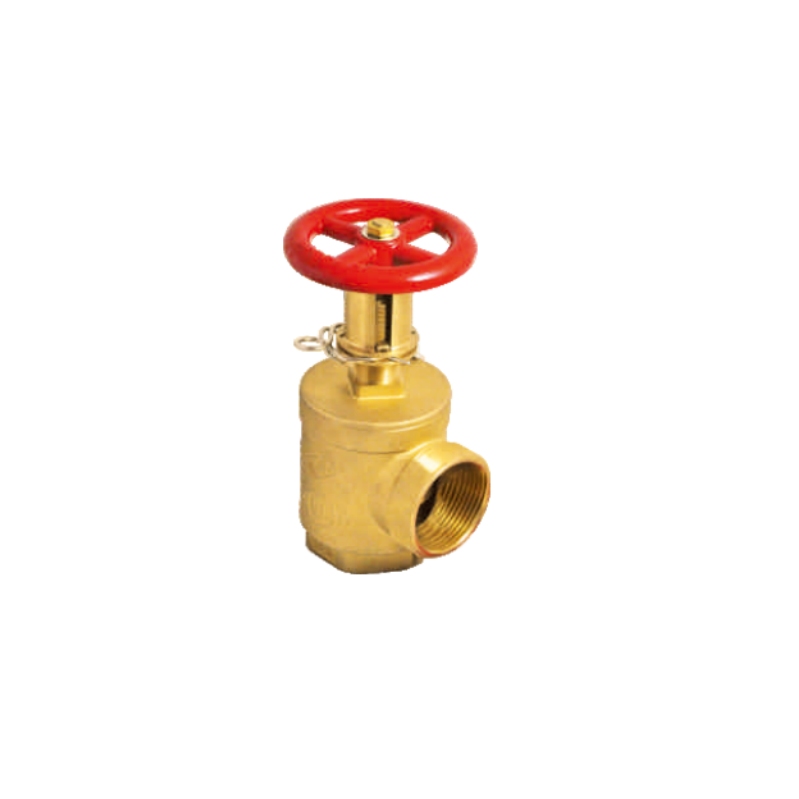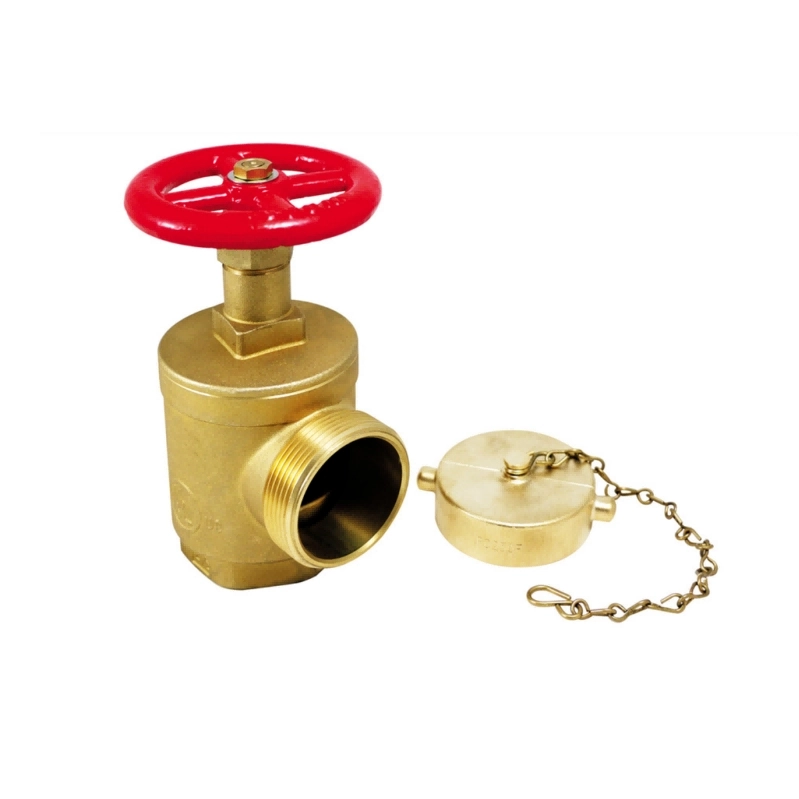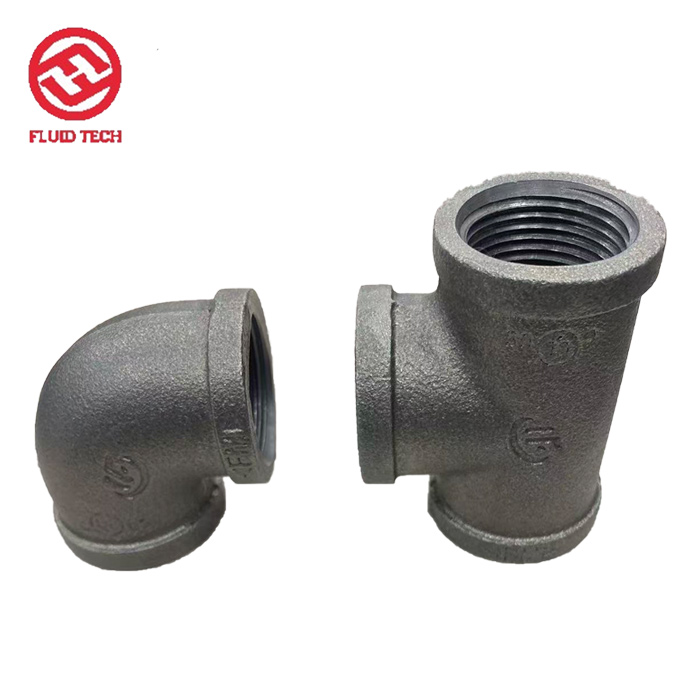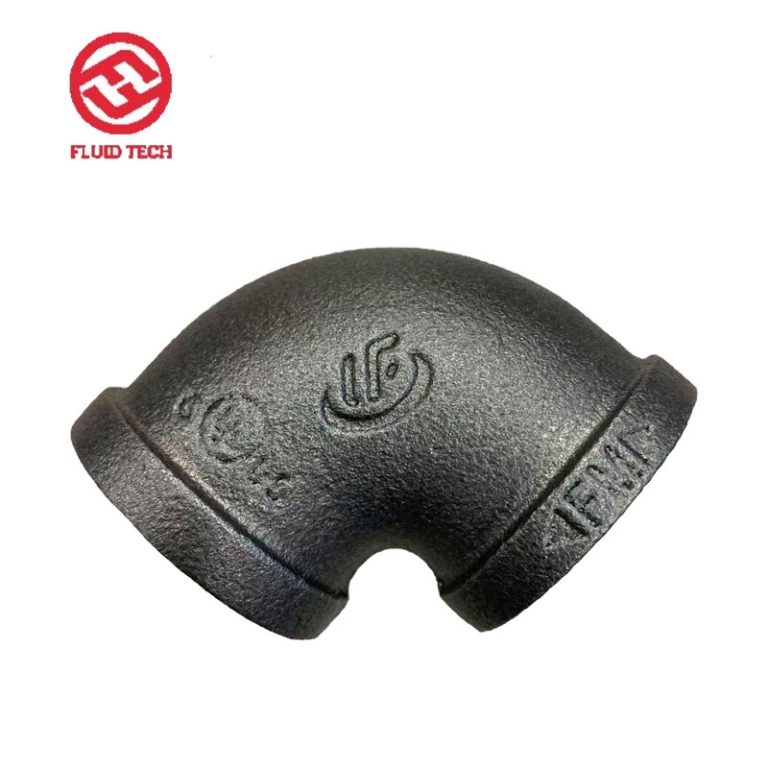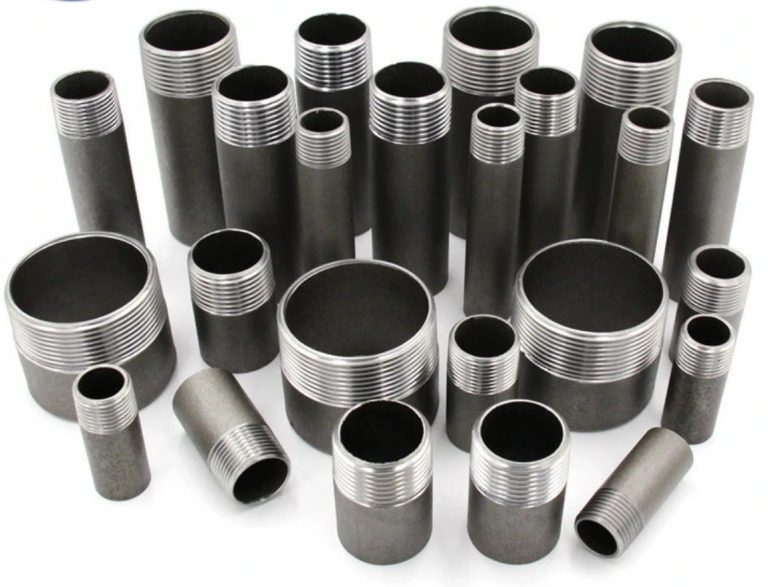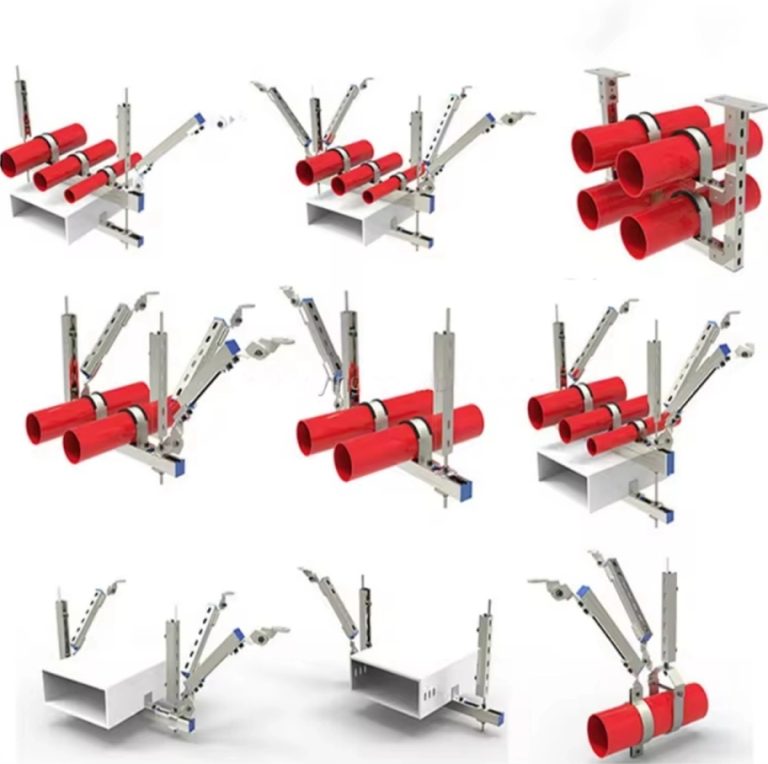Picture this: flames licking up the side of a high-rise in downtown Lagos, sirens wailing as firefighters scramble to hook up their lines. In that split-second chaos, the gear they grab from the building’s standpipe system could make all the difference. Get it wrong, and you’re fighting the fire with a trickle instead of a torrent. That’s where knowing your wall hydrants from your hose valves comes in. These aren’t just plumbing parts—they’re the unsung heroes keeping structures safe when seconds count.
As someone who’s spent years digging into fire protection setups, I’ve seen how a simple mix-up in terminology can snag a whole project. Today, we’re breaking it down: what sets a wall hydrant apart from a hose valve, why it matters for anyone from site engineers to building owners, and how picking the right one amps up your firefighting game. Stick around; by the end, you’ll spot the differences like a pro.
What Exactly Is a Wall Hydrant?
Let’s start with the basics. A wall hydrant—sometimes called a wall hydrant outlet or just a hydrant station—is that recessed box you see mounted flush into a building’s wall, usually in stairwells or corridors. It’s part of the standpipe system, designed to feed water straight to firefighters’ hoses during an emergency.
Think of it like the building’s emergency water tap. Water pressure comes roaring in from the municipal supply or a dedicated pump, and the hydrant lets crews connect their hoses right there on the spot. No digging up sidewalks or wrestling with external posts—these are indoor warriors.
From what I’ve gathered on job sites, wall hydrants shine in multi-story buildings. Take a place like a 20-floor office tower; without them, crews would be lugging hoses up endless stairs, wasting precious time. They’re built tough, too—typically with a 2.5-inch outlet to match standard fire hoses, and they handle pressures up to 175 psi without flinching. I’ve heard stories from old-timers about hydrants from the ’80s still holding up in retrofits, which says something about their staying power.
But here’s a quirky aside: ever notice how some folks call them “siamese connections” if there’s a dual inlet? It’s a nod to those old twin-head setups from way back, like something out of a vintage firehouse photo. Anyway, the point is, wall hydrants are all about quick access and high-volume flow for pros on the scene.
Key Features of Wall Hydrants
- Flush-Mount Design: Sits neat against the wall to keep hallways clear—safety first, right?
- High-Pressure Rating: Often good for 100-300 psi, depending on the building code.
- Brass or Stainless Construction: Resists corrosion, even in damp basements.
- Lockable Caps: Keeps vandals out, but firefighters can pop ’em in a flash.
In real-world terms, NFPA 14—the bible for standpipe systems—mandates these in buildings over 100 feet tall. Skip ’em, and you’re flirting with code violations that could shut down inspections faster than you can say “extinguisher drill.”
Demystifying the Hose Valve
Now, shift gears to the hose valve. This one’s a bit more versatile, often showing up in the same systems but with a different job. A hose valve is essentially a control point—a brass beast with threads on one end for the hose and connections on the other to the pipe. It’s the valve that lets you throttle the water flow, turning a wild gush into a targeted stream.
You might spot them at the end of a hose rack assembly, dangling ready in a cabinet, or even as standalone outlets for department connections. Unlike the hydrant’s all-in-one setup, hose valves are more about precision. They’re rated for 300 psi in many cases, with options for pressure reduction if things get too rowdy.
Digging into specs I’ve reviewed, these valves come in flavors like female-to-female (F&F) for rack setups or female-to-male (F&M) for direct hose hooks. And yeah, they’re FM approved and UL listed, meaning they’ve been hammered in labs to prove they won’t fail when you need ’em most. One time, on a warehouse retrofit in the Midwest, we swapped out rusted valves for new angle-style ones—flow improved by 20%, just like that. No drama, just better performance.
Hose valves aren’t flashy, but they’re reliable. They’re the workhorses that keep water where it needs to be, without flooding the floor or starving the nozzle.
Standout Traits of Hose Valves
- Threaded Outlets: Matches NH (National Hose) threads for seamless firefighter connections.
- Angle or Gate Designs: Angle types cut pressure loss; gates give full-on/off control.
- Red Handwheels: Easy-grip for gloved hands—practicality wins.
- Optional Pressure Regulators: Dials down output to 100 psi or so, protecting hoses from bursts.
Industry stats back this up: according to a Fire Protection Research Foundation report, proper valve maintenance cuts response delays by up to 15%. That’s not pocket change when lives are on the line.
Breaking Down the Key Differences: Wall Hydrant vs. Hose Valve
Alright, time to get surgical. Both play in the fire protection sandbox, but they’re not interchangeable. A wall hydrant is the big-picture access point; the hose valve is the fine-tuner. Confuse ’em, and your system’s as useful as a screen door on a submarine.
To make it crystal, here’s a quick side-by-side:
| 側面 | Wall Hydrant | Hose Valve |
| Primary Location | Recessed in walls, stairwells | Hose racks, cabinets, or pipe ends |
| Main Function | Provides direct water outlet for hoses | Controls and regulates flow from pipes |
| Pressure Handling | Up to 300 psi, high-volume focus | 175-300 psi, with reduction options |
| Connection Style | Siamese inlets, 2.5″ outlets | F&F or F&M threads for hoses |
| Typical Use Case | Tall buildings, standpipe feeds | Rack assemblies, department outlets |
| Installation Ease | Fixed, code-required in high-rises | Flexible, bolts onto existing lines |
See the overlap? Both brass-built, both certified. But swap a hydrant for a valve in a standpipe, and you’ve got flow issues. Or vice versa—imagine threading a hose to a hydrant without the right adapter. Messy.
From experience, I’ve chased down mislabeled blueprints where engineers mixed these up, leading to costly rework. One Gulf Coast hotel project? They ordered hose valves thinking they’d double as hydrants—ended up delaying opening by two months. Lesson learned: labels matter.
Why These Differences Pack a Punch for Effective Firefighting
You might think, “Okay, specs are cute, but so what?” Fair point. In the heat of a blaze—say, a grease fire jumping to curtains in a crowded mall—these distinctions turn potential disasters into controlled burns.
Consider flow rates. A wall hydrant can push 500 gallons per minute, per NFPA guidelines, flooding a room fast. Hose valves? They’re more surgical, maybe 250 GPM controlled, which is perfect for tight spots like engine rooms. Get the wrong one, and you’re either drowning the structure or barely denting the flames.
Data drives it home: The U.S. Fire Administration logs over 1.3 million structure fires yearly, with standpipe failures in 8% of high-rises. That’s where mismatches bite—delayed water means more spread, more damage. I’ve talked to chiefs who swear by annual drills just to test these setups. One guy in Philly told me his team shaved 45 seconds off hook-up time after tweaking valve placements. Small tweak, big win.
And don’t get me started on seismic zones. In places like California or the Middle East, valves with sway bracing hold steady when the ground shakes—hydrants might too, but they’re bulkier to brace. Real talk: during that 7.1 quake in Ridgecrest back in ’19, retrofitted valves saved a hospital wing from water chaos.
Bottom line? Grasping these nuances isn’t trivia; it’s the edge between a close call and a catastrophe.
Picking the Right Gear for Your Fire Setup
So, how do you choose without second-guessing? Start with your building’s blueprint. High-rise? Lean hydrants for backbone flow. Smaller spots like warehouses? Hose valves for targeted racks.
Budget in certifications—FM and UL stamps aren’t optional; they’re your lawsuit shield. And factor in maintenance: valves need quarterly checks for threads and seals; hydrants, annual flushes to clear sediment.
Pro tip from the trenches: Mock up a section during design. Run a flow test with a pitot gauge—numbers don’t lie. If you’re in a humid climate, go stainless over brass to fend off that green patina. Oh, and yeah, I once overlooked humidity on a coastal job—valves pitted faster than expected. Live and learn.
Layer in accessories: pressure reducers on valves for hose safety, caps on hydrants for dust. It’s about building a system that’s not just compliant, but downright intuitive for the crew showing up at 3 a.m.
Spotlight on Fluid Tech: Your Go-To Hose Valve Partner
When it comes to sourcing top-notch hose valves that won’t let you down, Fluid Tech steps up big time. Based out of Tianjin’s bustling logistics hub in northern China, this crew’s been knee-deep in fire protection since 2018, teaming with veteran foundries to crank out gear that’s FM approved, UL listed, and ready for global codes like LPCB or VDS.
They’re all about that one-stop vibe—think everything from angle hose valves in F&F or F&M configs to sprinklers and bracing, shipped from a massive warehouse with leads under 30 days. Projects? They’ve outfitted beasts like the Red Sea International Airport in Saudi Arabia with hydrant systems that handled the desert heat without a hiccup, or the CIU Nicosia campus in Cyprus, where seismic bracing kept things rock-solid.
What sets them apart? Rigorous QC—third-party inspections on every batch, water pressure tests that mimic real blasts. Their brass valves, like the 300 psi-rated angle hose models, come with red handwheels that grip like a vice, even in gloves. And the team’s got your back: directors tuned to regions from the Middle East to South America, dishing advice that feels local. If you’re building safe, Fluid Tech’s the name whispering “reliable” in your ear.
Wrapping It Up: Gear Up for Smarter Fire Safety
Diving into wall hydrants versus hose valves isn’t just geekery—it’s the smart move that keeps your building, and the folks in it, one step ahead of trouble. We’ve unpacked the setups, spotlighted the splits, and seen how they fuel firefighting wins. Next time you’re eyeing a spec sheet, you’ll know: hydrant for the heavy lift, valve for the precision play. Arm yourself with that knowledge, and you’re not just compliant—you’re prepared.
Frequently Asked Questions
What’s the biggest takeaway from comparing wall hydrants and hose valves for effective firefighting?
The real kicker is access and control—hydrants give that raw, high-volume punch for big blazes, while hose valves let you dial it in without overwhelming the scene. Nail the difference, and your response time drops, turning chaos into control.
Can a hose valve ever replace a wall hydrant in a standpipe system?
Not really, unless you’re tweaking for a low-rise setup. Hydrants are code-mandated for tall builds because of their outlet design; valves shine more in rack spots. I’ve seen hybrids work, but always run it by local fire marshals first.
How do pressure ratings factor into wall hydrant vs. hose valve choices?
Pressure’s everything—hydrants handle the building’s full blast, often 175-300 psi straight from pumps. Hose valves add regulators to tame it down, say to 100 psi for hose safety. Pick based on your flow needs; mismatch, and you risk bursts or weak streams.
Why bother with FM and UL certifications on these for effective firefighting?
They’re your proof of reliability—tested to explode-proof standards. In a pinch, certified gear like Fluid Tech’s valves means no surprises, just steady water when firefighters need it most. Skimp here, and you’re gambling with the basics.
In what scenarios does understanding wall hydrant vs. hose valve differences save time on-site?
Think high-rise drills: knowing your hydrant’s for quick hooks shaves seconds off setups, while valves prevent over-pressurizing in tight corridors. One airport project I recall? Proper swaps cut training snags by half—pure efficiency.

